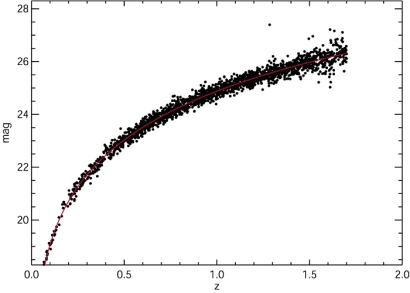Do we live in a universe where each discovery leads to deeper, more fundamental insights or do we live in one where some parts have rhyme and reason but others don’t?
.
.
.
.
.
Well,
.
.
.
.DO WE??
.
.
.
PUNK!!

Do we live in a universe where each discovery leads to deeper, more fundamental insights or do we live in one where some parts have rhyme and reason but others don’t? . . . . . Well, . . . .DO WE?? . . . PUNK!! Well then.. Physics ... bereft of any innate skillz in formulating meta-Physical queries: seems most often to lead to black/white er, digital-think summaries like the above: sans always ..even the satisfiction of having given the matter(s) a chance for intellect to go beyond math and bring-along the emotional brain, that aspect of deliberation which always attends any Big-D Decision which we homo-saps ever make (!) (Yeah too, this isn't even an optional post-Grad course for Physicists ... while Philosophers can't begin to operate without recognition of a necessity for intellect and emotion to synthesize Reason(ing.) Jeez do I gots to 'splain Everything? I seem to recall that, cut in stone, next to Stet Fortuna Domus was: Know Thyself (Apparently a Study-at-Home thing? never any Course Notes found.) |
|
|
is that it's an explanation based on a very long string of knowledge and inferences. 1) Stars moving away from us have red-shifted optical absorption and emission spectra. 2) Certain kinds of stars are "standard candles" and have the same total light emission "integrated intensity" no matter where they are in the universe. 3) g = G m1 m2/(r12^2) describes the gravitational and dynamical behavior of things with mass from things larger than subatomic particles to things larger than galaxy clusters. 4) Gravity bends space-time 5) There are well-understood signals that shows whether light from far-distant stars has been changed (bent, absorbed and re-emitted) on its way to us. The accelerating expansion of the universe (which is taken as the signature for "dark energy") is based on #2 - standard candles. There's a lot of evidence that that does work, but maybe there are some details yet to be worked out. (It's obviously more complicated than the $0.05 summary here, and far beyond my limited knowledge.) Maybe something like WIMPs are still the best explanation for what's going on. But I think it's dangerous for us to assume that that's the only possible explanation. "Premature optimization" in programming is a mistake. Premature exclusion of alternate paths of investigation in physics is a mistake, too. Huge efforts have been put into making fusion tokamaks without much success. More effort on stellarators might have allowed more progress. Maybe! We make much faster progress with a broad and deep effort in basic physics research, rather than a few expensive "moon shot" efforts that starve everything else. We need both the sexy "moon shot" things and the more "pedestrian" grind it out efforts for basic knowledge. Cheers, Scott. (Who is still too sleepy to wrap his head around the philosophy stuff. ;-) |
|
|
This ESO article (2001) does a pretty good job explaining the standard candles (Type 1a supernovae) and the possibilities that they may not hold up as we go farther back in time. https://www.eso.org/~bleibund/papers/EPN/epn.html Dark matter and energy were thrown in the mix to reconcile our theoretical understanding with ever more accurate observations. It is reminiscent of the introduction of "ether" to explain the actions of gravity before Einstein came along and made the need for it go away. Just like then, experiments alone may not be enough to get to the next level. We may need another such jump in understanding to get things going again. |
|
|
They've apparently got data beyond red-shifts of 1.5:  There seems to be something to the thought that the cosmological constant is slightly positive (implying some acceleration), but they're looking at very, very faint objects and applying lots of assumptions. There's a lot of scatter in the data too... I dunno. The universe is an amazingly rich, complex, and wonderful place. We shouldn't have so much hubris to think that we've got it all figured out in just the 90 years since the Big Bang was seriously considered in the scientific literature. Fascinating stuff. Cheers, Scott. |
|
|
|